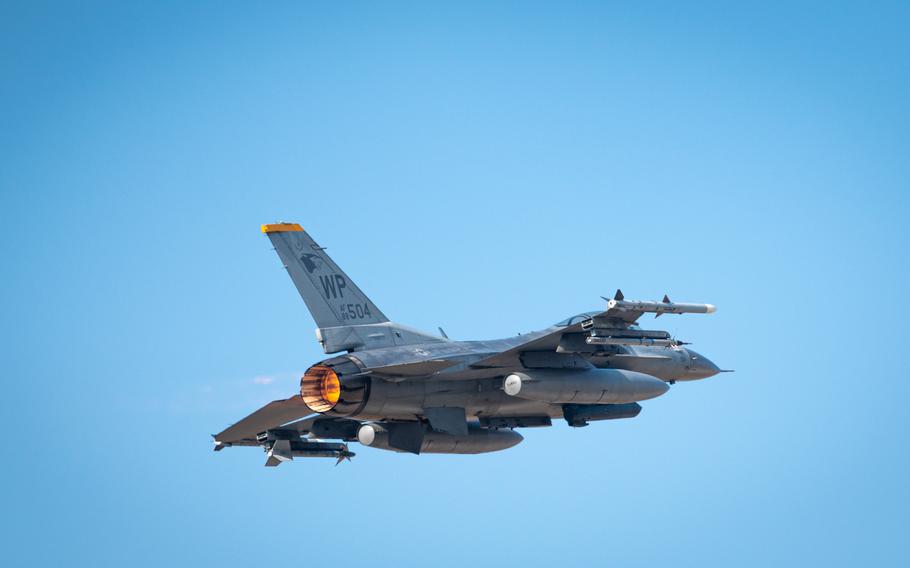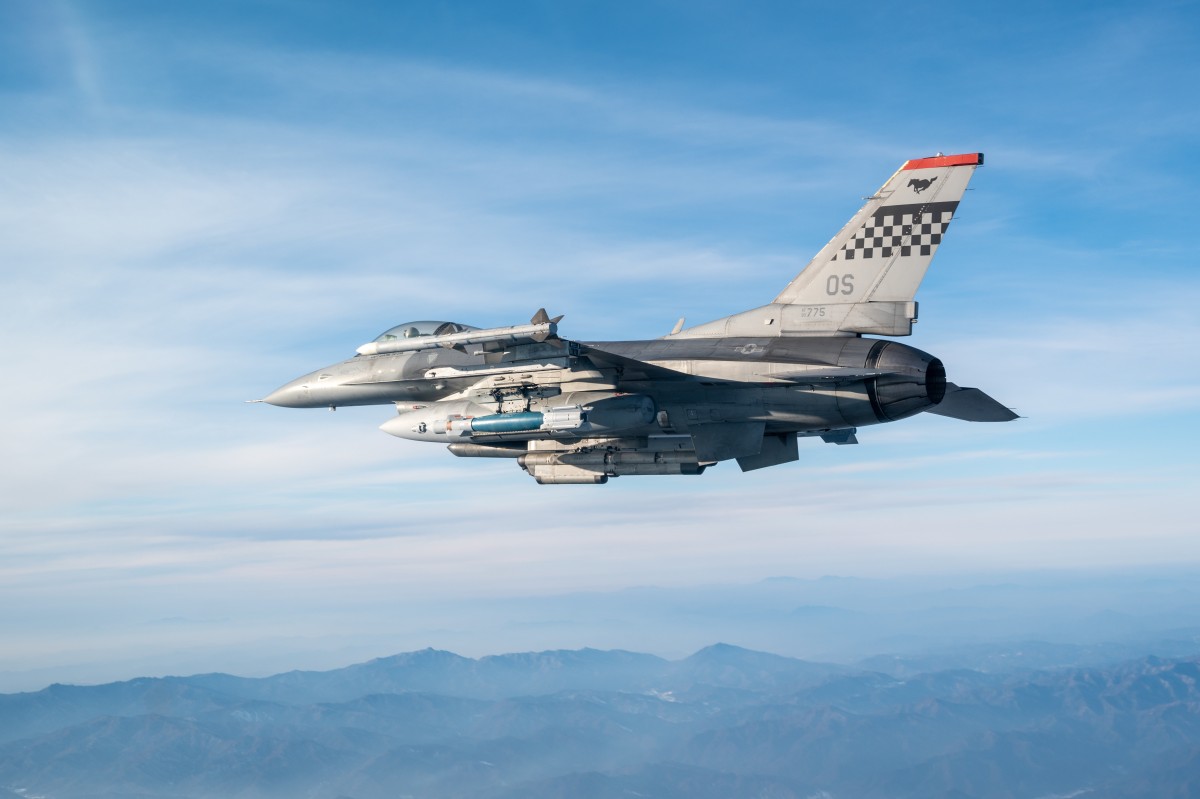A contingent of F-16 fighter jets under the US Forces Korea (USFK) recently left South Korea to participate in the annual Cobra Gold exercise in Thailand.
China Scores 8 Victories Against US, Japanese Troops; US-Held Wargames Give Decisive Edge To Beijing
According to the unit, an unspecified number of F-16s belonging to the U.S. 8th Fighter Wing stationed at Kunsan Air Base in Gunsan, 178 kilometers south of Seoul, left the country on February 22 to engage in the annual Cobra Gold exercise.
The unit highlighted the consistent involvement of 8th Fighter Wing units in the full-spectrum readiness exercise, spanning 43 iterations, emphasizing its role in reinforcing the strong alliance and strategic relationship between the United States and the Kingdom of Thailand.
This deployment marks the latest recorded occasion of USFK F-16s being utilized outside South Korea. Earlier, in January, six F-16s from the 8th Fighter Wing were sent to Kadena Air Base in Okinawa, Japan, for refueling missions.
The exercise, jointly led by the United States and Thailand, commenced on February 27 and is scheduled to conclude on March 8, 2024.

This year, ten nations, including Thailand, the United States, Indonesia, Japan, Singapore, Malaysia, and the Republic of Korea, are actively participating in the training, while approximately 20 additional nations serve in limited capacities as participants, planners, and observers.
Cobra Gold aims to strengthen regional relationships and enhance interoperability among Allies and partners through shared experiences and rigorous training.
In a parallel development, the US Indo-Pacific Command announced the arrival of hundreds of soldiers from the 2nd Stryker Brigade Combat Team “Lancer Brigade,” 7th Infantry Division, in the Kingdom of Thailand.
These troops are actively participating in various training activities during the 43rd iteration of Exercise Cobra Gold 2024. The exercise includes small arms ranges, situational training exercises, live fire exercises, mortar training, and a final exercise.
According to the US Army, Cobra Gold, established in 1982 as a bilateral maritime exercise between the United States and Thailand, also holds the distinction of being the longest-running international exercise globally.
The enduring success of this exercise is attributed to a history of cooperation and enduring partnerships between the participating nations.
“In the last 20 years, the nations represented here have trained together, with that training put to operational use in responding to seismic and life-threatening events,” said U.S. Ambassador to Thailand, Robert F. Godec.
“Only through cooperation can we rise to these challenges and keep our people safe by providing a solid foundation for regional security and inclusive prosperity,” Godec added.
USFK’s Contribution To Peacekeeping
The USFK is a sub-unified command under the US Indo-Pacific Command (USINDOPACOM). It serves as the joint headquarters for US combat-ready forces within the ROK/US Combined Forces Command (CFC), overseeing South Korean and US ground, air, sea, and special operations.
Established on July 1, 1957, its primary mission is to support the United Nations Command (UNC) and Combined Forces Command by coordinating and planning among US component commands while exercising operational control of US forces as directed by the United States Indo-Pacific Command.
USFK has been involved in various important operations over the years, primarily aimed at maintaining stability and security on the Korean Peninsula.
One such operation that underscores the unwavering resolve of the USFK and its allies is Operation Paul Bunyan, carried out in 1976.

That military undertaking was a direct response to a brutal and unprovoked attack that occurred on August 18, 1976, at Panmunjom, a location known for its significance in the Korean Demilitarized Zone (DMZ).
The catalyst for Operation Paul Bunyan was the murder of two US Army officers, Captain Arthur Bonifas and First Lieutenant Mark Barrett, who were supervising the trimming of a poplar tree by five Korean service corps personnel.
The tree-obstructed video surveillance cameras were intended to monitor North Korean guard posts and ensure compliance with the armistice. This obstruction led to a notorious incident, later dubbed “the axe murder incident.”
The assailants, 30 North Korean guards armed with axes, ax handles, and metal pipes, carried out the attack, resulting in the first fatalities in the Joint Security Area since the signing of the Armistice in 1953.
In the aftermath of this egregious incident, nine other UN Command personnel were injured, prompting the immediate escalation of tensions in the region.
Reacting swiftly, the USFK, alongside South Korean forces and support from other UNC nations, initiated Operation Paul Bunyan to assert its commitment to maintain security and stability on the Korean Peninsula.
As a response to the heightened threat, North Korea placed its military in full combat posture, prompting the United States to deploy a show of force, including aircraft carriers, a squadron of Phantom fighters, and F-111 fighter-bombers.

The orders of then-US President Gerald Ford on August 21, 1976, marked the commencement of Operation Paul Bunyan as a 110-man UN Command task force.
Supported by Guam-based B-52 bombers and F-111 fighter bombers overhead, it carried out the operation to cut down the poplar tree that had become the focal point of the deadly incident.
During the hour-long operation, a 300-man US-ROK Quick Reaction Force stood by in helicopter gunships south of the DMZ.
Simultaneously, in a somewhat conciliatory move, North Korea conveyed a “regretful” message from North Korean President Kim Il-sung through its Senior Member during a private session at Panmunjom.
Initially dismissed by the UN Command due to perceived insincerity, the message was eventually accepted, albeit cautiously.
In the aftermath of Operation Paul Bunyan, North Korea took the step of removing four guard posts from the southern part of the Joint Security Area (JSA), leading to a physical separation of UN and North Korean forces.
This operation, marked by its strategic precision and resolute response, remains a pivotal chapter in the ongoing efforts to uphold peace and security on the Korean Peninsula.
- Contact the author at ashishmichel(at)gmail.com
- Follow EurAsian Times on Google News




